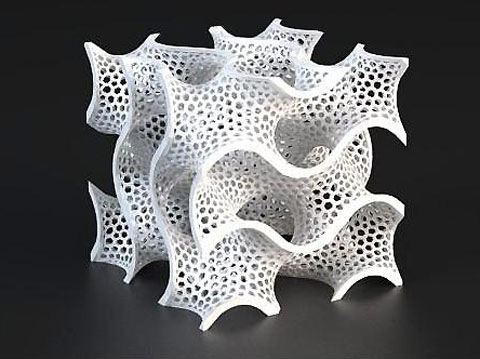There are a million tricks and tips 3D printers use in order to enhance their print quality. Oftentimes, what must be done in order to create a proper print requires knowledge of many individual print, printer, and material parameters. However, there are some simple steps everyone should take when creating a 3D print to improve their end-result. Today, we will focus on those general tips all should use.
1) Make sure your print-bed is level
The more level your print-bed, the more likely it is that you will have a successful print. An unlevel bed is quite likely to cause problems for your print, as the printhead has no way of adjusting itself if the bed is unlevel. If an area of the bed is too far from the printhead, it is likely that filament will fail to stick, resulting in a failed print. If it is too close, the filament may clog your nozzle, resulting in an extruder jam; these jams can be time consuming to resolve, so it is best to avoid these problems and make sure your bed is level! How to level a bed varies with the use of different 3D printers, so make sure to read the instructions to ensure a level bed.
2) Make sure the gap between your printhead and printbed is proper
Ensuring that the print-bed is level is a great start, however if the gap between your printhead and printbed is not properly set, you will encounter the same problems. This means that you must make sure the “Z-gap” (the space between the printhead and printbed) is properly set. Again, doing this will largely depend on how your particular 3D printer functions, so make sure to read the instructions.
3) Keep an eye on the first few layers!
If the first few layers of your 3D print do not come out properly, you can bet the troubles won’t end there. The odds that a print will finish properly after a successful first few-layers are quite high, so make sure those first few layers come out. If you see any problems, we recommend cancelling the print and saving your time and filament. You should first check is the problem may be bed leveling and height, and if not, you will have to check your print parameters.
4) Print small pieces
Printing large items may seem like a great idea to save time, but unfortunately the likelihood of problems with your print rises with the size of the print. So, in order to actually save time and filament, we recommend printing smaller pieces and items, at least when you are first starting out. It can be quite discouraging to set up a 6-hour print and have it come out poorly. However, if you start small, you will become more experienced and feel more positively about 3D printing, and eventually move on to larger prints.
5) Maintain your 3D printer
Not maintaining your 3D printer is a great way to ruin it — so don’t do that. Your printer has many moving and mechanical parts, which heat up and cool down, and move back and forth. This is a recipe for destruction if not properly maintained. That doesn’t mean that you have to do TONS of extra work to make sure it is maintained, but you will have to do much extra work to repair your printer if you do not take proper care of it. Read your instruction manual to understand what maintenance should be done to your particular printer.
6) Clean your print bed
Along with tip #5, make sure your print bed is regularly cleaned with rubbing alcohol. Oil from touching the bed with your hands will make it difficult for filament to stick to the bed, and this is a simple solution.
7) Watch out for tangled filament
Filament which tangles is going to mess up your 3D print. Make sure that filament is not tangling and is somewhat loose on the spool to avoid this problem.
8) Use painters or kapton tape to improve filament adhesion
Along with a heated print-bed, applying a flat layer of painters or kapton tape to your print bed can greatly improve the adhesion of filament to it. Another trick is to coat the bed with a layer of ABS melted in acetone for ABS prints, or to apply a layer of hairspray or magic glue.



